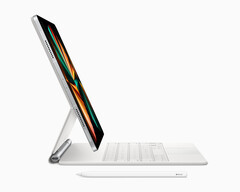Apple’s new ultra-powerful iPad Pro models have started arriving in customer hands this week. While only the 12.9-inch model picks up the vaunted mini-LED display, both feature the outstanding M1 chip and up to 16 GB of RAM and 2 TB of storage. In particular, this is far more RAM than Apple has ever fitted into an iPad, while the storage options available are on par with many laptops. Previous iPads have topped out at 6 GB of RAM, making this generation a dramatic upgrade in this regard.
The question now is what to do with all that power? Clearly, there isn’t a single iPad app currently available that will push either the M1 chip or the 16 GB RAM to their respective performance ceilings - even from Apple. When questioned about this, Apple has thus far indicated that it is looking forward to seeing what developers are able to accomplish with all of this new horsepower. Inevitably, we will probably see some iPad apps properly tap into this power, but it is hard to imagine many will and for some time.
Apple hasn’t indicated any public plans to bring Mac apps to the iPad but it could be coming in iPadOS 15. There are many hints that this could happen. When the iPad was launched, it was very much like a larger iPhone. It took some time for developers, including Apple, to properly realize the full potential of the additional screen real-estate the iPad offered. But when they did, it set up the iPad for the success that it continues to enjoy today, as something that sits somewhere between an iPhone and Mac.
In fact, if anything, on that spectrum, the iPad is much closer to the Mac in terms of its capabilities, even if it uses an iPhone-like, touch-first interface. This, of course, is a much more modern way of interacting with a device than the older, but tried and tested, method of using a point-and-click mouse. However, in recent times, the iPad has become even more Mac-like than ever as Apple responds to customer feedback about being able to effectively use the iPad for the workplace as well as home.
This has come with the introduction of multi-window support with Split View and the official iPad Smart Keyboard. More recently, Apple has brought point-and-click support to the iPad via iPadOS 14 and taken it a step further with the Magic Keyboard with built-in trackpad for the iPad Pro models. To this you can now add what Apple has itself called an M1 chip specially optimized for the Mac along with Mac-like RAM levels of up to 16 GB.
We had been expecting Apple to rename the M1 the A14X in line with its previous naming scheme for iPad Pro high-performance chips. Why then would Apple add a chip that has allegedly been optimized for Mac apps without also bringing along Mac app support to the iPad? With Apple transitioning its entire Mac lineup to its custom ARM-based chips, the reality is that the iPad Pro models can now fully support macOS dual-booting.
Of course, Apple has already added support for both iOS and iPadOS apps on the Mac, even though the Mac is arguably less able to support iOS apps and iPadOS apps thanks to a lack of touchscreen support than iPadOS is able to support Mac apps. iPads now have both touchscreen and point-and-click support. There is literally no aspect of the new iPad Pro models that cannot fully support a full-blown Mac app experience on the iPad.
If Apple was to introduce this capability in the iPadOS 15, as I suspect it might, it would make the iPad Pro models the complete solution for many people that to date it hasn’t been. While this might eat into Apple’s MacBook sales, Apple has always held the view that it is better that it releases devices that might cannibalize its own sales rather than the competition stealing all the thunder. It also won’t be losing too much money either as it has limited the 16 GB option to the more expensive 1 TB and 2 TB storage tiers. Furthermore, if you need more RAM than that, you will still need to buy a Mac.
WWDC 2021 is shaping up to be a very exciting event and as a new 12.9-inch iPad Pro owner, I am very much looking forward to seeing what Apple announces in relation to iPadOS 15.
Source(s)
Own














